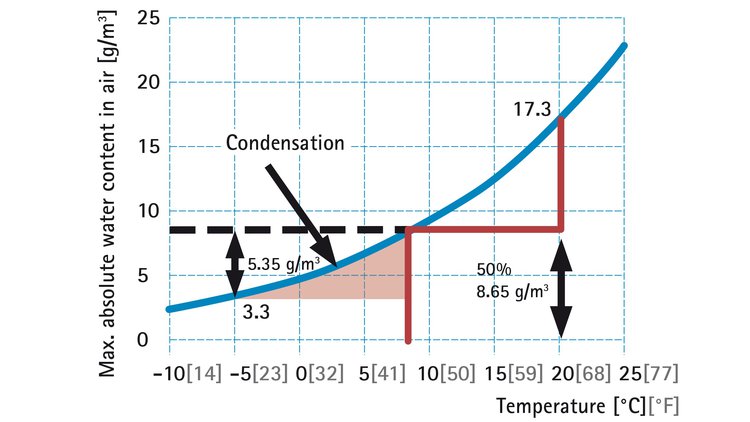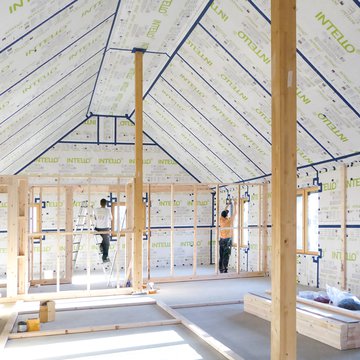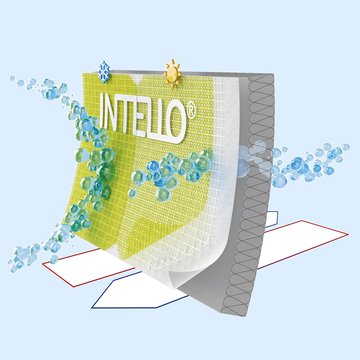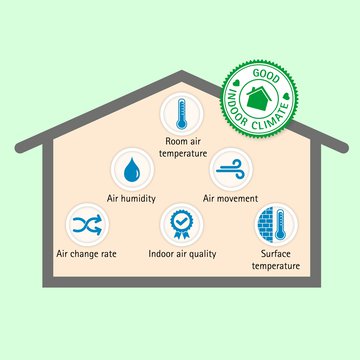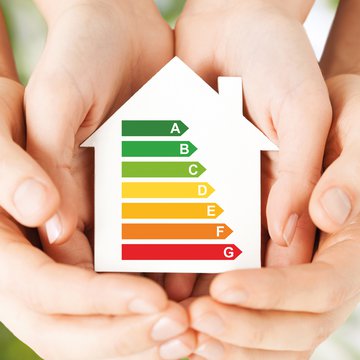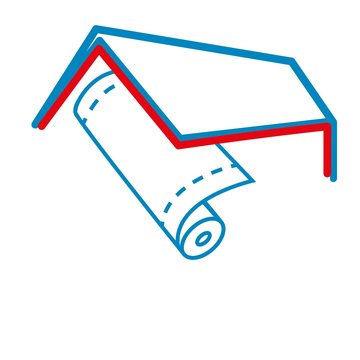Avoiding moisture damage

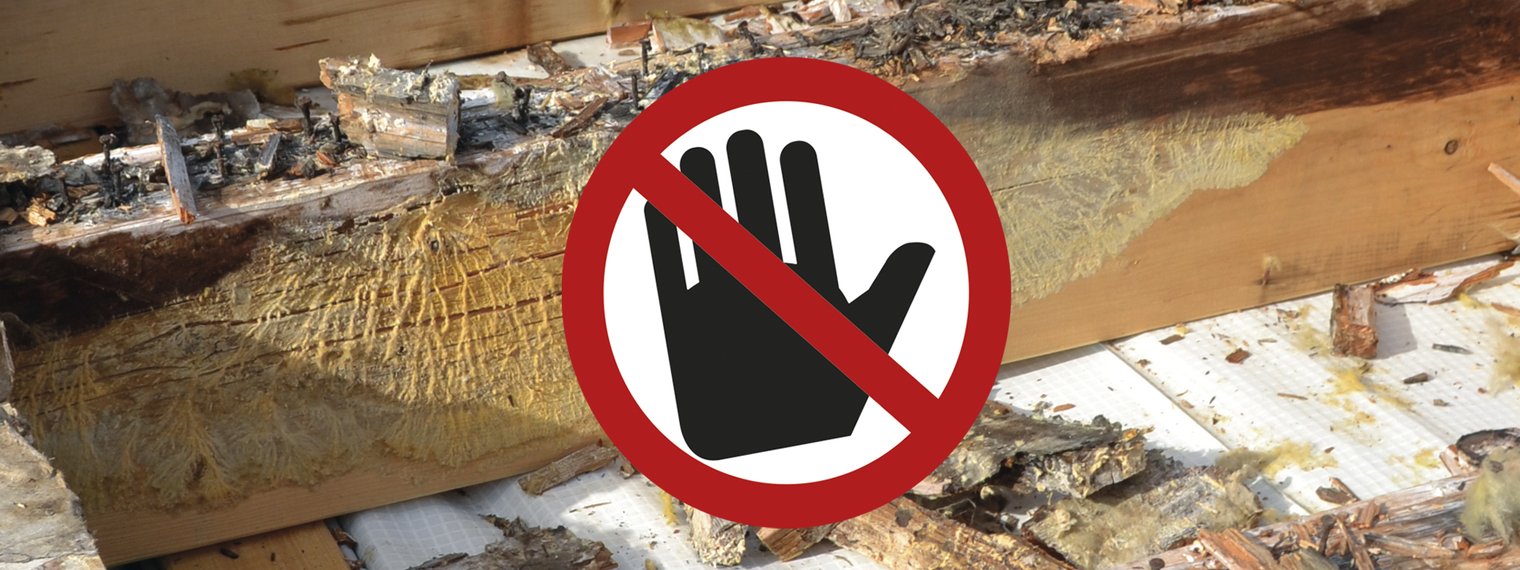

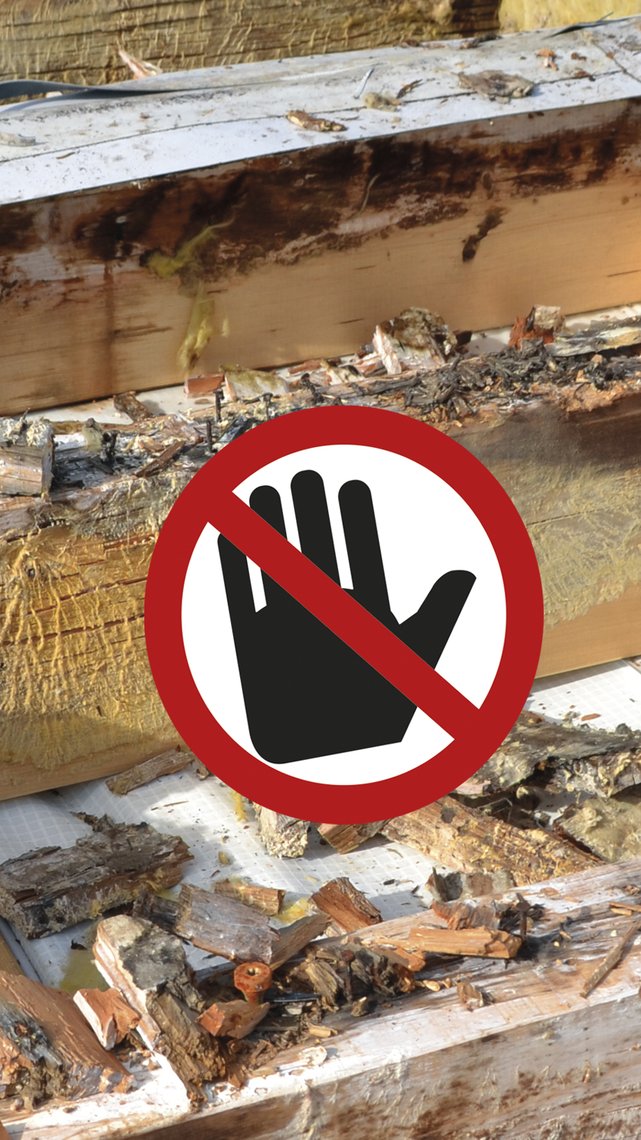
Avoiding
moisture
damage
Protection against mould and damage to structures
Thermal insulation structures have to be protected against the moisture loading contained in warm indoor air. This task is carried out by vapour control (alternate terms: vapour check or retarder) and airtight membranes.
If indoor air is able to flow through the thermal insulation in an unhindered manner, it is increasingly cooled as it penetrates further into the insulation structure until eventually the water vapour present in the air liquefies in the form of condensation. This condensation can cause significant damage to building structures. Crucial load-bearing elements can start to rot and may lose their structural strength.
Moisture can also lead to the formation of mould that causes health problems. Many mould fungi release poisons – such as MVOCs (microbial volatile organic compounds) – and spores as secondary metabolic products that are harmful to human health. These are a leading cause of allergies. Humans should avoid all contact with mould fungi. In this context, it does not make any difference whether the MVOCs or spores enter into the human body through the stomach from our food or else through the lungs if they are present in the air we breathe.
A vapour control and airtight layer on the inside of the thermal insulation can help to prevent this kind of moisture damage to structures.
Intelligent airtight membranes offer significantly more reliable protection than conventional sheeting
Condensation – Dew point – Amount of condensation
Thermal insulation in the building envelope separates warm indoor air, which has a high moisture content, from cold outdoor air with its low absolute moisture content.
If warm indoor air penetrates into a building element during the cold season, it will gradually cool down along its path through the structure. The water vapour contained in this air may then condense in the form of liquid water. The physical behaviour of the air is responsible for the formation of condensation:
warm air can hold more water than cold air. At higher relative humidities (e.g. around 65% in newly built buildings), the dew point temperature rises and, as a direct result, the amount of condensation increases too.
Fig.: Starting out from an indoor climate at 20 °C and 50% relative humidity, the dew point is reached at 8.7 °C. At a temperature of -5 °C, the amount of condensate formed will be 5.35 g/m³ of air.

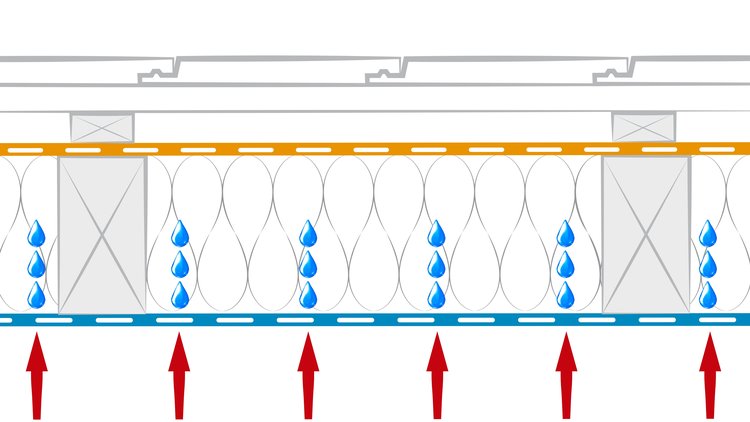
Diffusion is desirable – Convection is not
In contrast with convection, diffusion is a predictable and desirable process. Diffusion takes place due to a concentration or partial pressure difference for water vapour between the inside and outside. In this case, the mass transfer does not occur through leaks or gaps, but instead in the form of moisture passing through a monolithic, airtight material layer.
The direction of this diffusion is generally from the inside to the outside in winter and from the outside to the inside in summer. The entry of moisture into a building structure depends on the diffusion resistance (sd value) of the material. In Central Europe, the period with warm exterior temperatures is longer than the period with winter temperatures, which means that more moisture can dry out of the structure.
A vapour check membrane with an sd value of 2.3 m allows approx. 5 g of moisture per square metre to penetrate into the building structure each day in wintertime, according to DIN 4108.

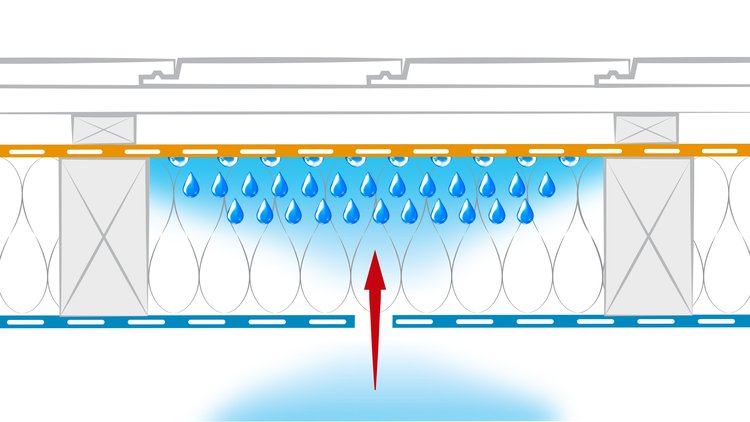
Air flow (convection) is problematic
A flowing movement of air is referred to as convection. This can occur in thermal insulation structures if there are gaps in the vapour check layer. The temperature difference between the interior and exterior climates leads to an air pressure gradient, which the air flow then attempts to balance out.
Several hundred grams of moisture can enter the insulation due to convection in a single day and accumulate there in the form of condensation water.

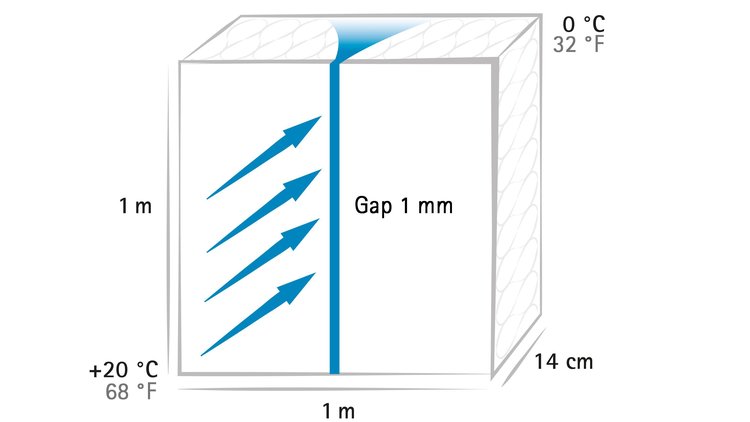
Example: 800 g of condensation through a 1 mm gap
0.5 g of water per square metre will diffuse into the building structure each standard winter day through a gap-free insulation structure with a vapour control membrane with an sd value of 30 m.
In the same period, 800 g of moisture per metre of gap length will flow into the structure by convection through a gap with a width of 1 mm in the vapour control membrane.
The amount of moisture is 1,600 times larger in the case of convection through a gap!
Additional unplanned sources of moisture

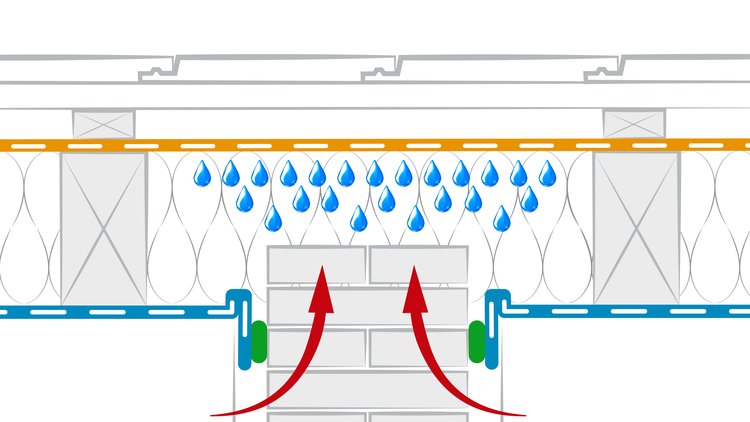
Entry of moisture at the sides of building elements
Flank diffusion: In this case, moisture enters into the thermal insulation at the sides of an adjacent building element. This adjacent sturcture is generally airtight, but has a lower sd value than the vapour control membrane. One example for a situation of this kind is a masonry wall with airtight plastering that penetrates into the insulation layer.
If structures that are closed to diffusion on the outside have vapour control membranes on the inside that allow little or no drying to the inside, there is a risk of an accumulation of moisture and of resulting damage to structures in the case of airtight design.

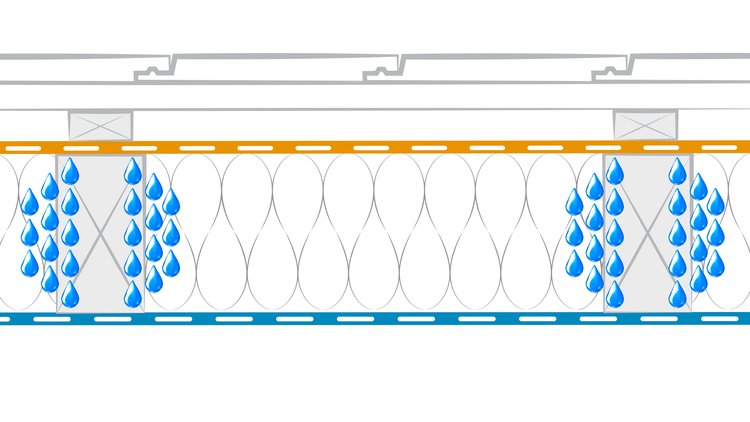
Moisture contained in building materials
Damp construction materials: By their very nature, newly built structures can contain a lot of moisture in the building materials themselves. This example illustrates the amounts that can be involved: a roof with 6/22 rafters, e=70 cm and a wood density of 500 kg per cubic metre will have approx. 10 kg of wood per square metre; when this wood dries, the following amounts of water will be released per square metre:
- 1% drying: 100 g of water/m²
- 10% drying: 1000 g of water/m²
- 20% drying: 2000 g of water/m²
These quantities of moisture can subsequently enter into other parts of the building structure.
The key takeaways
- Moisture can enter into a building structure in many different ways. It is impossible to prevent a certain level of moisture loading.
- However, if moisture levels are too high, moisture damage to structures can result.
- Vapour control membranes provide more reliable protection than vapour barriers. Vapour barriers with high diffusion resistances permit very little drying from the building element to the inside, and thus quickly become moisture traps.
- The decisive factor in preventing moisture damage to structures is the presence of significant drying reserves.

